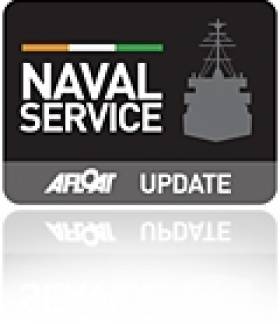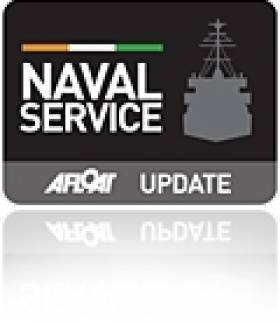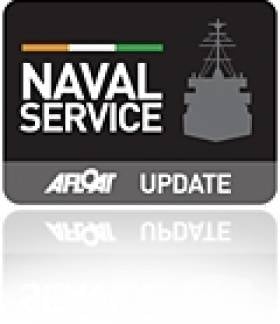Displaying items by tag: Fishery Detentions
Foreign Fishing Vessels Detained off Castletownbere
#FISHERY DETENTIONS – With less than a fortnight into the month, the Naval Service has detained two foreign fishing vessels for alleged breaches of fishing regulations.
Last week the L.É. Aoife (P22) detained a Spanish registered fishing vessel approximately 20 nautical miles west of Mizen Head. The vessel was escorted to Castletownbere and handed over to the Gardaí.
The second detention occurred the week before, again involving the L.É. Aoife which detained a French registered fishing vessel approximately 60 nautical miles south of the Co. Cork fishing port. Likewise this vessel was also handed over to the relevant authorities.
These latest detainments by the Naval Service bring the total to 20 fishing vessels so far this year.
Naval Service Detain Irish Trawler off Roches Point
#FISHERY DETENTION – An Irish registered fishing vessel was detained by the Naval Service OPV L.É. Aoife (P23) today some 60 miles south-east of Roches Point, Co. Cork.
The detention was in relation to alleged under-recording of catch and other alleged breaches of fishing regulations. Currently the L.É. Aoife is escorting the detained vessel which is expected to berth alongside Cobh later this evening and handed over to the Gardaí.
So far this year, the Naval Service has carried out 1014 inspections, issued 36 vessel warnings for 42 infringements detected and detained 15 vessels for 39 detected infringements.
Fishing Vessel Detained off Ballycotton
#FISHERY DETENTION – The Naval Service coastal patrol vessel (CPV) L.É. Ciara detained an Irish registered fishing vessel some 30 nautical miles south of Ballycotton Co. Cork. The detention which took place around midnight on Wednesday was for an alleged breach of technical fishing regulations.
The trawler was escorted by the L.É. Ciara (P42) to Cobh where it arrived on the Thursday and was handed over to the Gardaí.
In late July the L.É. Aisling (P23) detained an Irish registered vessel in waters approximately 125 nautical miles off Loop Head, Co. Clare. To date the Naval Service have carried out 946 boardings, issued 38 warnings and detained 12 vessels so far in 2012.
Fishery Detentions off Clare Coast
#FISHERY DETENTIONS – Yesterday the Naval Service OPV L.E. Aisling (P23) detained an Irish registered vessel approximately 125 nautical miles off the coast of Loop Head, Co. Clare. The detention was in relation to an alleged breach of technical fishing regulations.
The vessel was to be escorted by the OPV to arrive in Castletownbere this morning and then and handed over to the Gardaí.
Also earlier this month, the LPV L.E. Niamh (P52) detained another vessel on the same grounds. On that occasion the detained French registered vessel was likewise fishing in waters off Loop Head and taken under escort to the Co. Cork fishing harbour.
According to Naval Service figures, they have carried out 910 boardings, issued 38 warnings and detained 11 vessels so far this year.































































